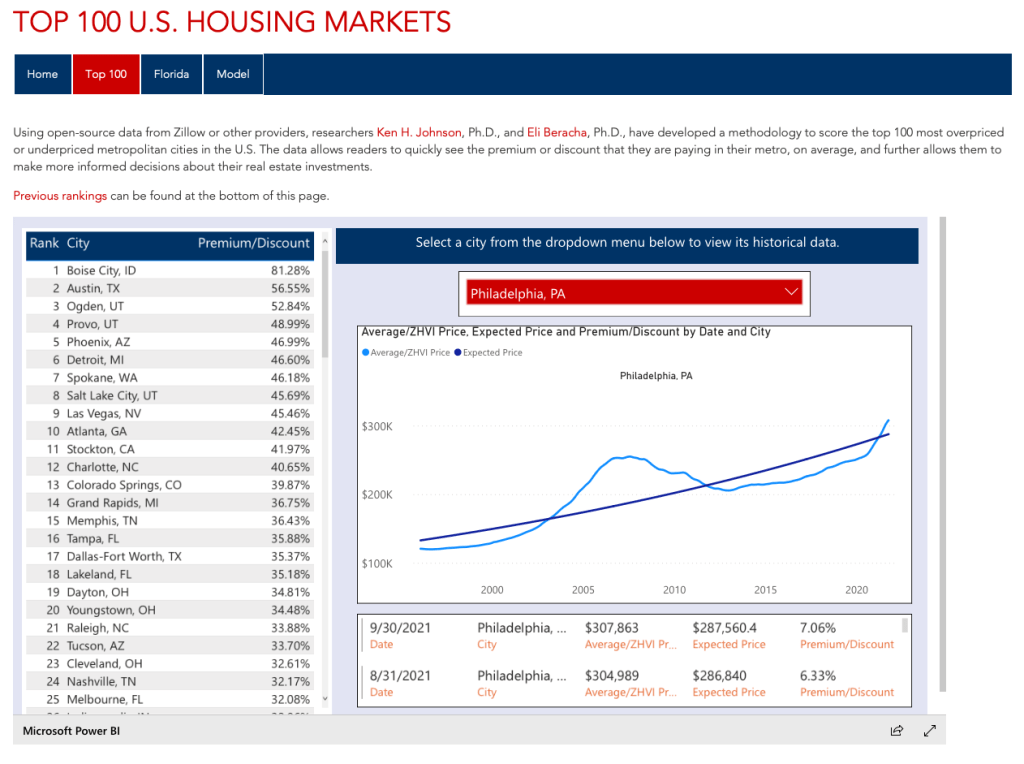Goal: Helping Consumers Make Smart Decisions About Home Buying and Selling

BY: MEDIA ADVISORY | Florida Atlantic University
BOCA RATON, FL (BocaNewsNow.com) (Copyright © 2021 MetroDesk Media, LLC) — Florida Atlantic University’s College of Business launched a new, free website tool to help consumers, lenders and real estate professionals make more informed home buying decisions.
The tool includes interactive graphs showing the degree of overpricing or underpricing per month in the nation’s 100 largest housing markets over the past 25 years.
In addition, the updated website now provides the current premium or discount score for a given market, as well as the current average price compared to the average price buyers should be paying based on historical trends.
“Being able to see historically how a housing market has performed can help potential buyers visualize where their housing market is in its current housing cycle,” said Ken H. Johnson, Ph.D., an economist with FAU Executive Education in the College of Business. “They will have a better understanding of the possibility of significant housing downturns or the potential for growth in home values.”
In August, Johnson and Eli Beracha, Ph.D., of the Hollo School of Real Estate at Florida International University, launched the housing market rankings to show which metropolitan areas have the most overpriced properties. Boise, Idaho, has topped the list in each of the first three months, with buyers there paying roughly 80 percent more than the homes are worth based on historical prices.
In the most recent rankings, homes are undervalued in only four U.S. markets (New York; Baltimore; Virginia Beach, Virginia; and Honolulu, Hawaii).
Johnson and Beracha create the rankings using publicly available data from online real estate portal Zillow or other providers. The data covers single-family homes, townhomes, condominiums and co-ops.
“Markets in the lower end of a housing cycle generally have strong potential for growth,” Beracha said. “Markets nearing the peak of their housing cycles have a greater chance of a downturn in prices.”
The updated website can be viewed here. It allows for comparisons across metro areas dating back to 1996.
“This gives everyone involved in real estate more information more quickly,” Johnson said. “For example, banks might want to provide risk-adjusted pricing for mortgages originated in markets that have significantly deviated from their long-term housing trends. That could improve underwriting and prevent the kind of epic collapse that occurred nearly 15 years ago.”

